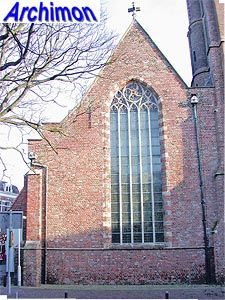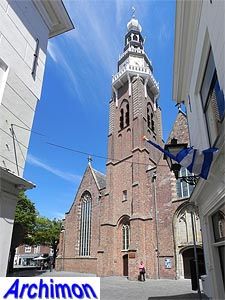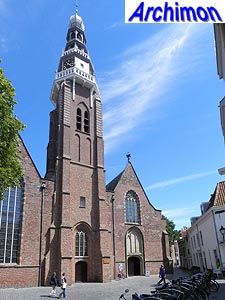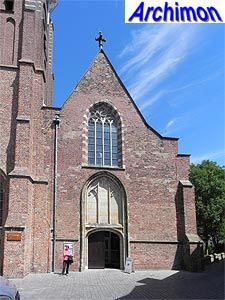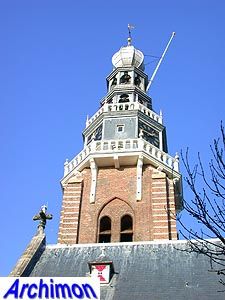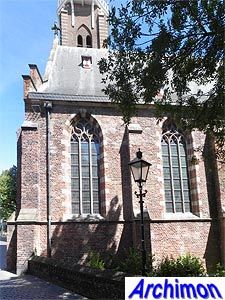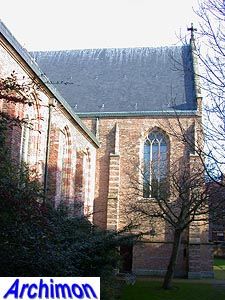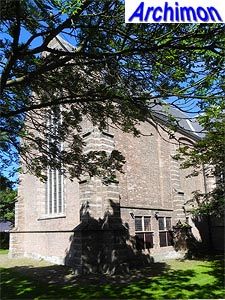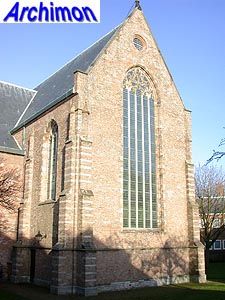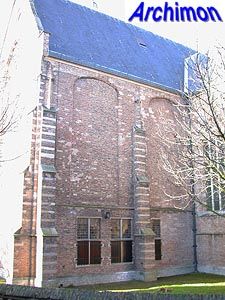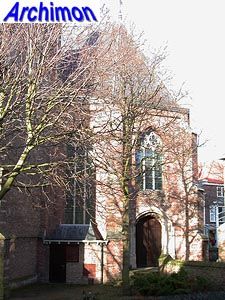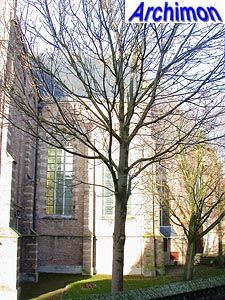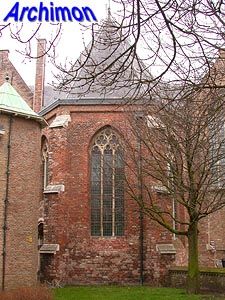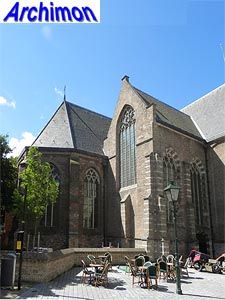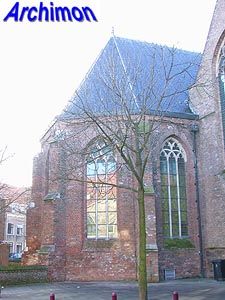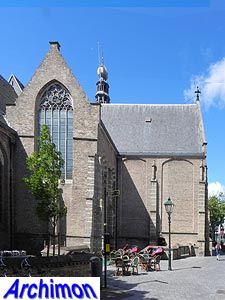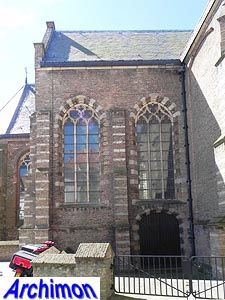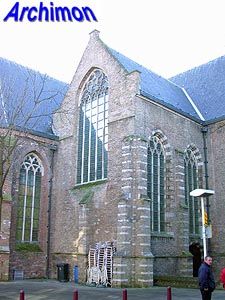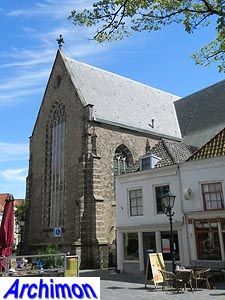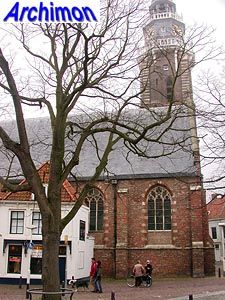
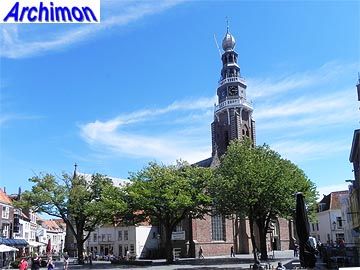 In
the early 14th century the small settlement Vlissingen was turning into
a small town. Between 1308 and 1328 a basilican church was built, the
St. Jacob. Of this first church the closure of the choir and the lower
part of the tower remain. In the 15th century the transept was added,
as well as the lateral chapels on both sides of the choir. In 1501 a
segment was added to the tower, partly supported by buttresses and
decorated with layers of natural stone. After this, the nave was
transformed into the current atypical hall-church; the central aisle is
higher than the side-aisle. Due to the lack of a clerestorey the church
can laso be described as a pseudo-basilica. Chapels were built on the
outer sides of the side-aisles, one of which is dated 1558. Already in 1572 the
whole church became protestant, before that the northern transept-arm had been
used as a Walloon church for some time. In 1585 a portal was added to the south side of the choir.
In the late-16th century the tower was heigthened with a new wooden spire.
In 1628 a wall was built to seperate the northern transept-arm, which was now
destined to become an English church, from the rest of the building. Its
exterior was rebuilt in Classical style and a small gate in the same style gave
access to this 'church within a church'. This situation continued until 1911,
when a fire destroyed the church and its tower. After this, the church was
restored to its former state, but with new 'Gothic' traceries and a new copy of
the destroyed wooden spire. The English protestant community moved to a new
church and the transept became a part of the big church again. The gate was
moved to the street on the south side of the choir. During the Second World War
and the big flood of 1953 the church was again badly damaged, but in 1954 the
damage was repaired.
In
the early 14th century the small settlement Vlissingen was turning into
a small town. Between 1308 and 1328 a basilican church was built, the
St. Jacob. Of this first church the closure of the choir and the lower
part of the tower remain. In the 15th century the transept was added,
as well as the lateral chapels on both sides of the choir. In 1501 a
segment was added to the tower, partly supported by buttresses and
decorated with layers of natural stone. After this, the nave was
transformed into the current atypical hall-church; the central aisle is
higher than the side-aisle. Due to the lack of a clerestorey the church
can laso be described as a pseudo-basilica. Chapels were built on the
outer sides of the side-aisles, one of which is dated 1558. Already in 1572 the
whole church became protestant, before that the northern transept-arm had been
used as a Walloon church for some time. In 1585 a portal was added to the south side of the choir.
In the late-16th century the tower was heigthened with a new wooden spire.
In 1628 a wall was built to seperate the northern transept-arm, which was now
destined to become an English church, from the rest of the building. Its
exterior was rebuilt in Classical style and a small gate in the same style gave
access to this 'church within a church'. This situation continued until 1911,
when a fire destroyed the church and its tower. After this, the church was
restored to its former state, but with new 'Gothic' traceries and a new copy of
the destroyed wooden spire. The English protestant community moved to a new
church and the transept became a part of the big church again. The gate was
moved to the street on the south side of the choir. During the Second World War
and the big flood of 1953 the church was again badly damaged, but in 1954 the
damage was repaired.
